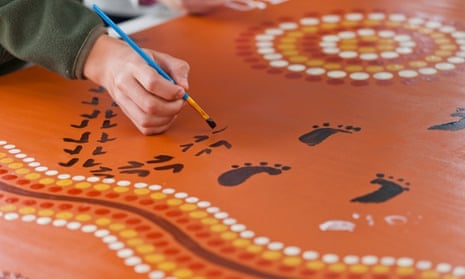I hope you had a happy Naidoc week! Or, as I like to call it, a week of sausage sizzles and eye incest from accidentally perving on an unknown cousin. Ideally everyone had had a wonderful week of both.
I’ve been going to Naidoc before I was even born and was just various parts of my parents reproductive cells. I’ve been volunteering at my local Naidoc since I was – wait there, I’m just asking mum – eight years old. I’d get up at 5am, get Maccas breakfast with my mum, go down to Plumpton Park and help put the tents up, one of many tasks for the day.
This Naidoc week for me was similar to all of those that had preceded it: catching up with community, which is always the highlight; the welcomes to country; sausage sizzles and dance performances; and maybe an attendance from a politician or two (always a great photo op).
But with another year behind me, I found myself asking whether Naidoc is enough.
During its lifetime, Naidoc week has evolved from protest to celebration, from activism to passivism. Naidoc's origins were those Aboriginal communities that boycotted Australia Day. This lead to the first Day of Mourning in 1938, which was then held the Sunday before Australia Day, until 1955.
The Day of Mourning was spearheaded by protests from Aboriginal communities around Australia. As the rest of the country celebrated the invasion and genocide of the Aboriginal people in their Australia Day celebrations, the Aboriginal community mourned.
In 1955 it was decided that the day should be more than a protest, and should include a celebration. Then in 1956, the federal government, working with Aboriginal and non-Aboriginal groups, formed the National Aborigines Day Observance Committee (Nadoc – Torres Strait Islanders weren't included in the title until the early 1990s).
Nadoc's official formation is presented as having been led equally by government, non-Aboriginal and Aboriginal groups. I find that difficult to believe. At the time Nadoc was formed, Aboriginal people were still governed by the "Aborigines welfare board" and still not recognised or allowed to vote. It doesn’t seem likely that it was a decision that came from the Aboriginal community.
Was Nadoc instituted by the government of the day in order to depoliticise the Day of Mourning, which disappeared soon afterwards? Our right to be recognised in protest went too – is that why the date of Nadoc was moved? Having a day so close to Australia Day would have meant that this country would have to admit what it still hasn’t: that Australia is founded on genocide and stolen land.
I thought about this as I sat with my Aunties, while kids with Aboriginal flags painted on their faces ran around me. Are we celebrating the great Naidoc con job?
Perhaps the focus on celebration is a sign of how Indigenous Australia has moved forward, but look at the present situation: Aboriginal life expectancy is still far below that of non-Aboriginal people and we are still overrepresented in the prison system. It’s been 226 years since 1788, and we are still one of the most vulnerable groups in this country – and we are celebrating?
One of my elders said this to me this week, “The good thing about NAIDOC week is that the kids have somewhere to go every day and somewhere to get a feed.” Yes, Naidoc is a real celebration.
Naidoc is still not recognised as a public holiday, and as a result participation is mostly voluntary. It's also no longer about the Aboriginal and Torres Strait Islander community in this country. When you look at the funding guidelines for Naidoc, there is now a selection criterion that relies on the extent to which non-Indigenous people are engaged.
This means any event that engages non-Aboriginal people is going to be more successful. Are Naidoc celebrations really for Aboriginal people? Or are they just "a great opportunity [for non-Indigenous people] to participate in a range of activities and to support [their] local Aboriginal and Torres Strait Islander community”?
Why are non-Indigenous funding requirements imposed on Aboriginal celebrations? This is about self-determination within the Aboriginal community, who should be able to conduct Naidoc however they like. The possibility of political dissent during Naidoc week has been diminished, as reconciliatory celebrations replace recognition and depoliticise our right to protest and mourn.
Why is this country so afraid to let us have one day – one day out of 365 days, out of who knows how many days since 1788 – to observe and recognise and mourn our past, that still affects our lives today. Why does everything have to be turned into a celebration about culture and reconciliation? Why must the reality of disadvantage be made problematic, as if acknowledging it prevents us from ever moving forward?
I cannot in good conscience participate in my own oppression, so this year's Naidoc will be my last. Until my people have received the recognition they deserve, for the dispossession and trauma they continue to endure, I won't celebrate.
